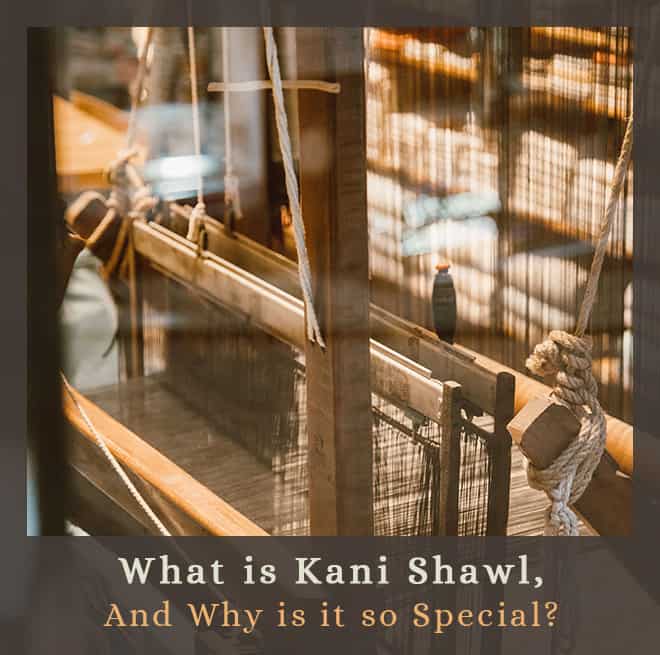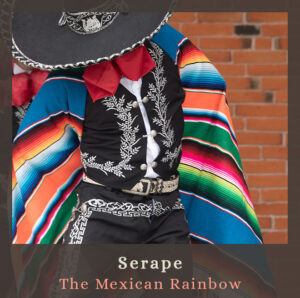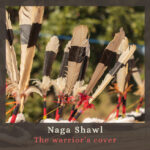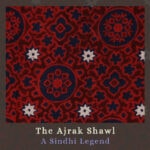Kani shawl is a luxurious, handwoven Kashmiri shawl crafted using a unique complex twill-tapestry technique with fine Pashmina yarn. It is really hard to describe in words the depth of beauty and craftsmanship these shawls embody.
Originating from the Kanihama area of the Kashmir valley since the Mughal era, these shawls feature intricate geometric, floral, and traditional motifs, usually on a pale base, symbolizing a rich history of royal patronage and exquisite artistry.
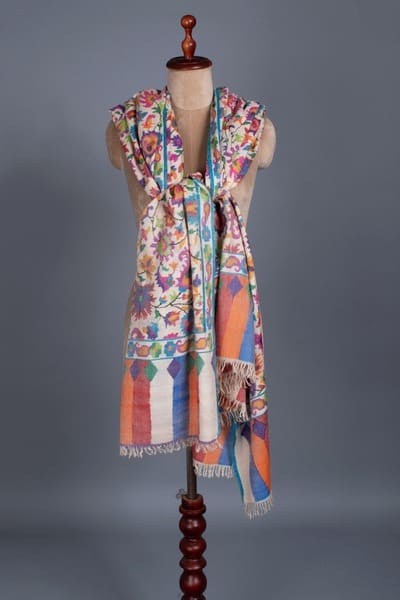
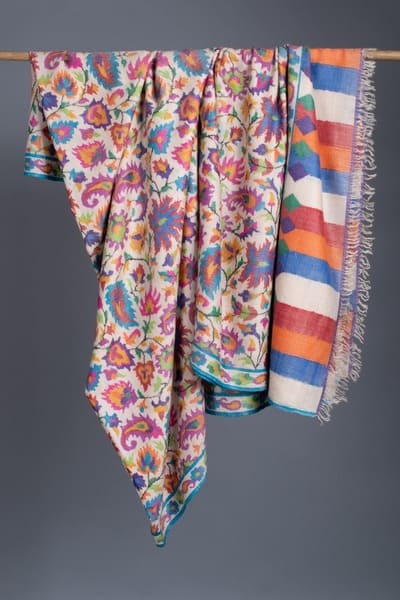
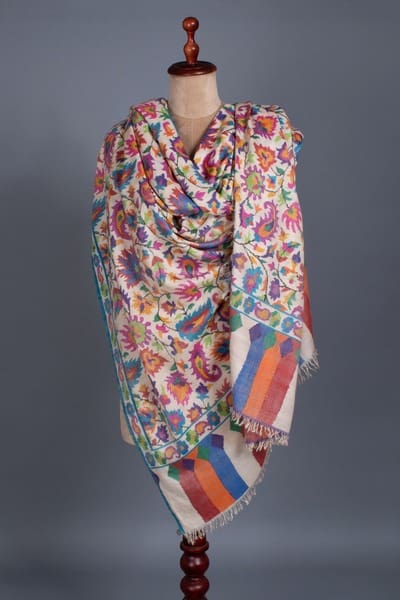
What is the meaning of the name Kani?
The name ‘Kani’ holds a different dual meaning.
Firstly, it refers to the small wooden oblong spool called ‘kani’ in Kashmiri, which is a kind of bobbin used for winding the weft threads in the weaving process.
Secondly, it also represents the village of Kanihama, believed to be the origin of this intricate craft.
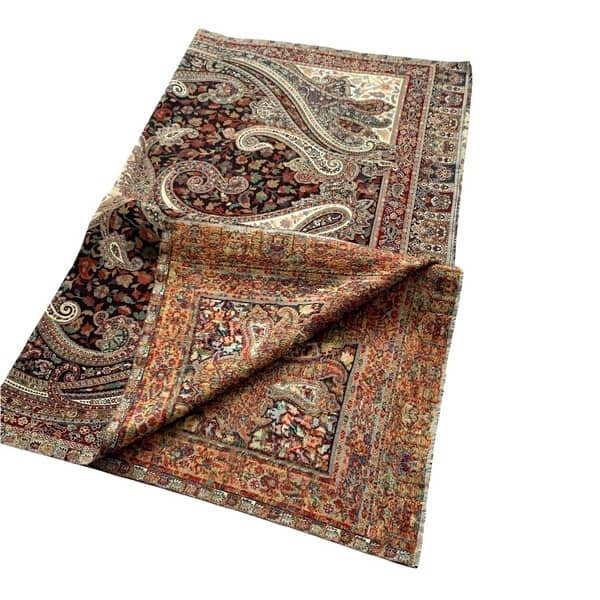
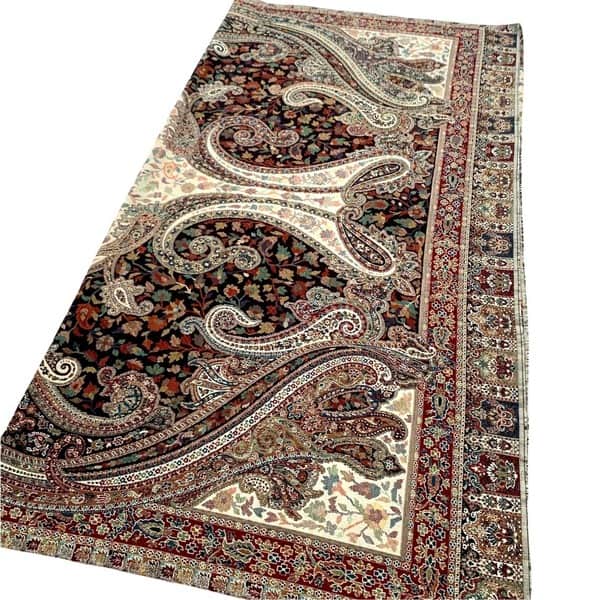
What is Kani Shawl Made of?
Kani shawls are traditionally made from Pashmina wool, which is obtained from the undercoat of the Capra Hircus or Pashmina goat found in the high-altitude regions of the Himalayas. This super fine & soft wool is known for its warmth and lightweight nature. However, these days you can find Kani shawls made from pretty much everything, from simple wool to cotton, and even synthetic fibers.
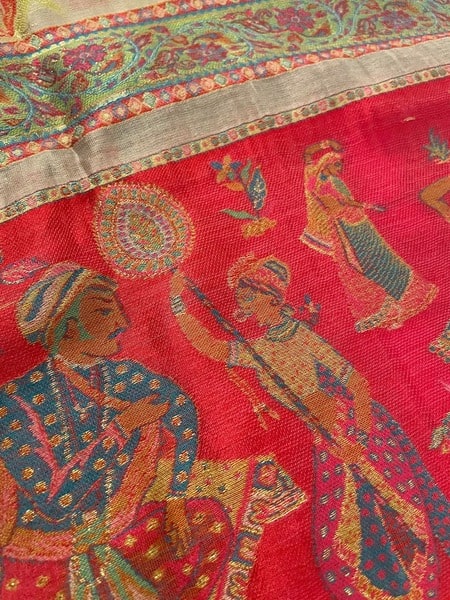
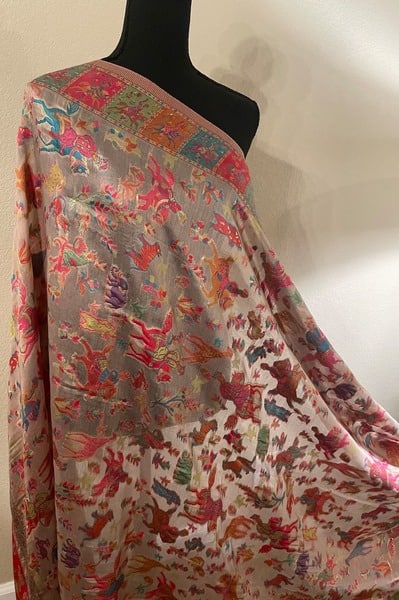
How do Kani shawls are made?
No matter how much admiration you feel when you see these shawls, one can’t imagine how complex the process is and how much patience and love are needed.
Here’s just a glimpse of the UNBELIEVABLE process:
Kani shawls are made on a handloom. The intricate Mughal patterns, featuring flowers and leaves, are woven into the fabric like a carpet, thread by thread, based on the coded talim pattern.
How long does it take to make a Kani shawl?
Weaving a Kani shawl requires immense patience, with artisans working 5-7 hours a day only to complete a few centimeters!!! The duration to complete a shawl depends on its design, size, and detailing, generally ranging from 6 to 18 months. The techniques and knowledge of Kani shawl weaving have been passed down through generations, with only around 2,000 weavers remaining today.
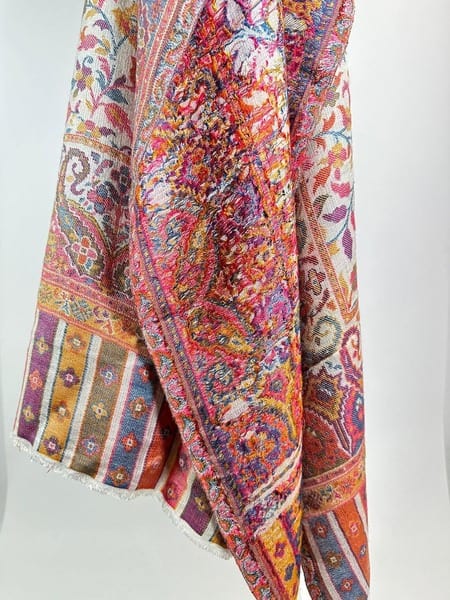
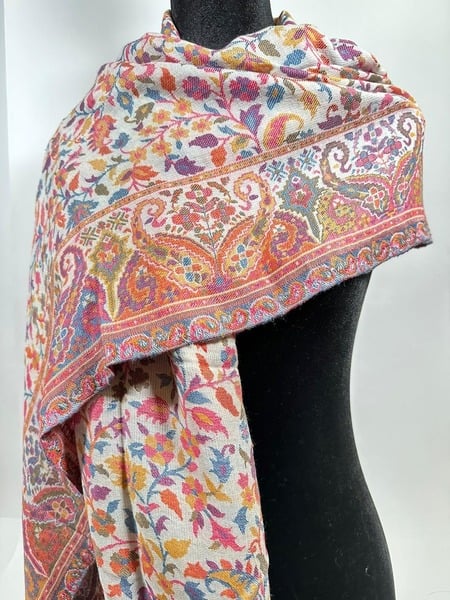
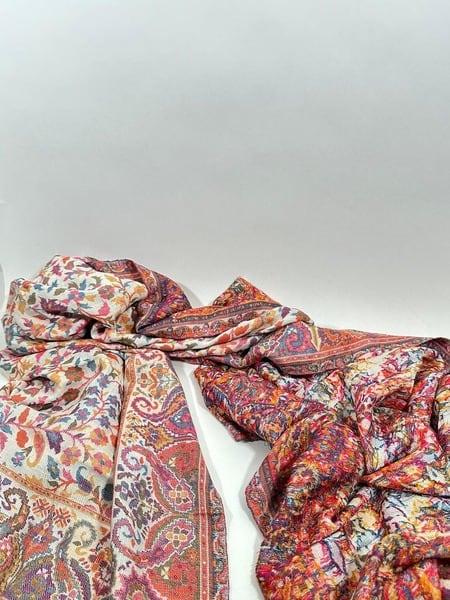
The process of making an Authentic Kani shawl
Kani shawls are made through a laborious and time-intensive process involving several stages and artisans who specialize in each step. We included their professional local names not only for the authentic feel, but to emphasize the numerous specialties needed for making these shawls:
Design preparation: A pattern drawer (nakkash) creates the design, which is then passed to the tarah-guru, who decides the color combination and calculates the required yarns for each shade.
Warp preparation: The warp-maker (nakatu) and warp-dresser (pennakamgur) prepare the warp on a four-shaft treadle loom based on the details provided by the tarah-guru.
Talim notation: The talim-guru prepares a shorthand notation called talim, based on the design. This notation is prepared on graph paper and used by the master weaver (ustad) to instruct the weavers.
Handweaving with Kanis: Weavers use Kanis, wooden or cane needles, to hand-weave the weft threads. Sometimes up to fifty Kanis with corresponding colored yarn is used for a single design. Complex designs may be divided across multiple looms to accelerate the process.
Joining the designs: If multiple looms are used, the needleworker seamlessly joins the separate designs into a single shawl.
Completion: Depending on the complexity of the design, it can take two weavers between six months and two years to complete a single kani shawl!
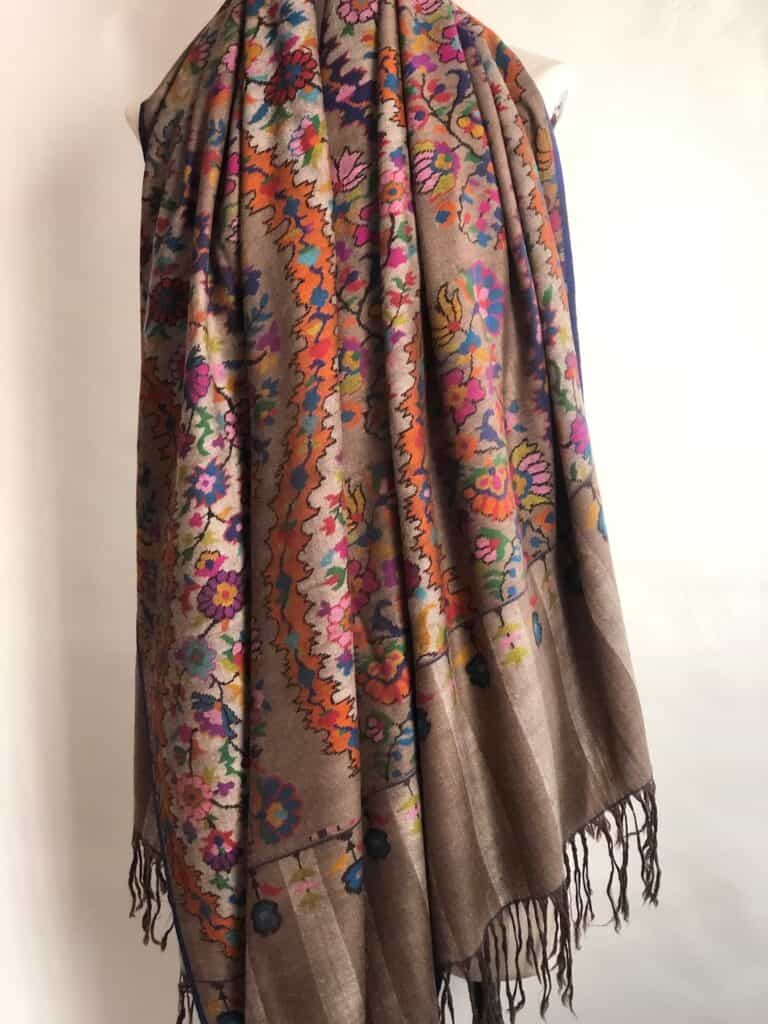
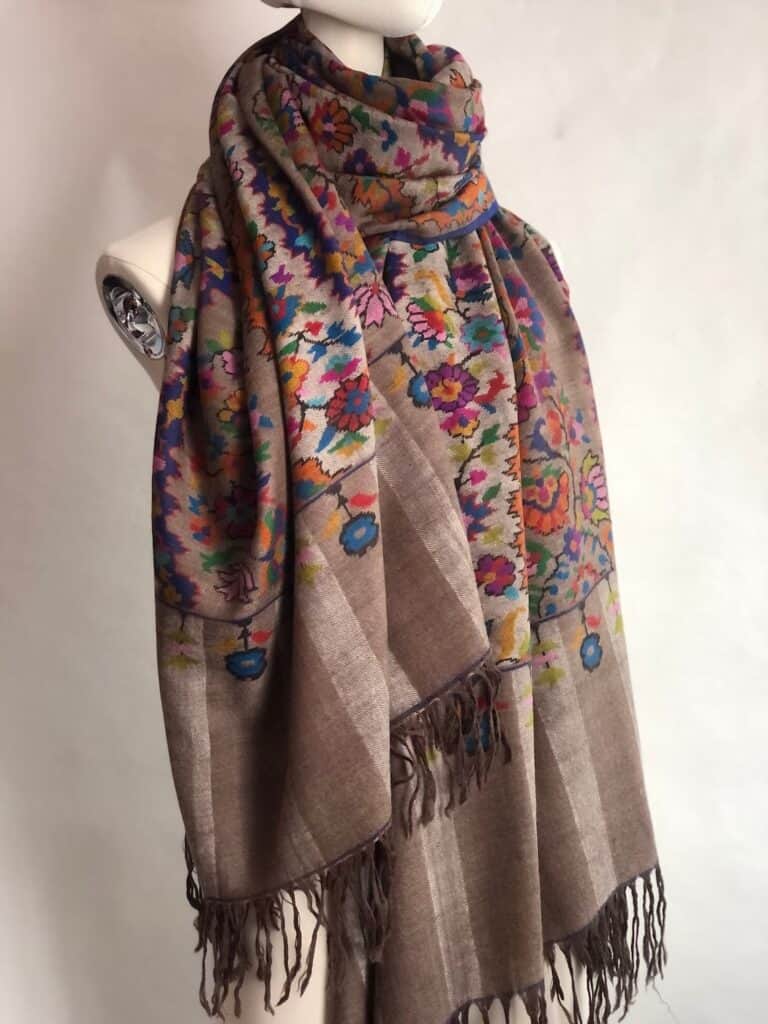
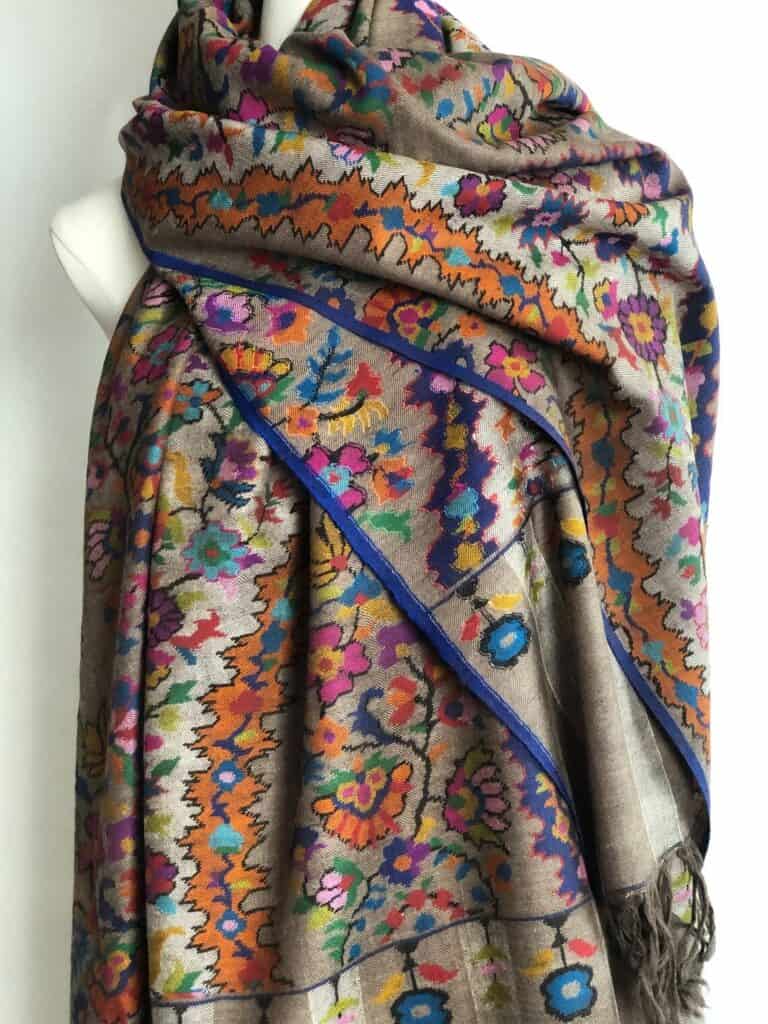
The Love that Saved the Kani Shawls
Though the kani weaving art passed from generation to generation in the Kanihama region, keeping this art alive was not easy. The kani shawl weaving industry has faced numerous challenges since the eighteenth century, including high state and imperial taxes, famines, earthquakes, decline of royal patronage, and rough competition that came with the mechanized looms.
These difficulties led to the near extinction of this traditional craft.
However, the practice experienced a revival when Ghulam Mohammed Kanihama, a caring weaver and parliamentarian, established a training center in Kanihama. This center taught weaver families the techniques passed down by the last generation of 1800s weavers, including the art of reading and interpreting the talim.
Thanks to these revival efforts, the early 2000s saw an upturn in demand for kani shawls, breathing new life into this ancient and intricate craft.
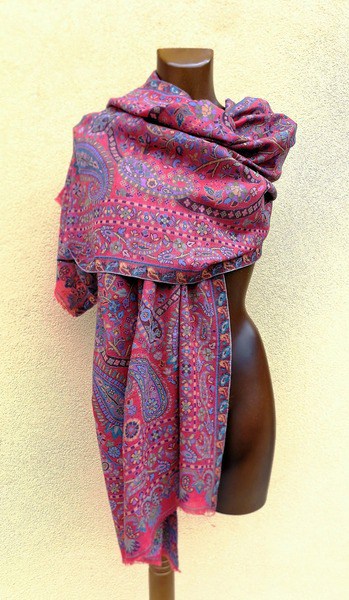
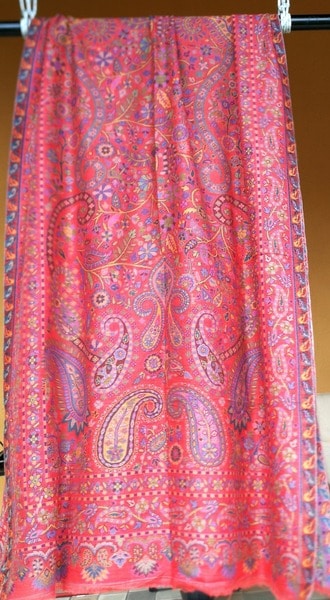
Kani Shawl Types
There are several types of Kani shawls, differing in design, color, and intricacy.
Some popular types include the Jamawar, which features a single intricate pattern, mostly paisley.
The Dorukha, which is reversible and features different patterns on each side. The
Kani Paladar Shawl is a minimalistic Kani shawl design that has patterns only on its borders.
The Chand Daar features a centered design with small motifs on the corners.
Kani Shawls GI Protection
In 2008, the Indian government recognized the cultural and historical significance of Kani weaving by granting it Geographical Indication (GI) status. This legal protection ensures that only shawls made in the Kanihama region can be sold as genuine Kani shawls.
This significant move not only safeguards the unique identity and authenticity of these exquisite shawls but also provides a much-needed boost to the local artisans and the kani weaving industry as a whole, preserving their cultural heritage and craftsmanship.
The Future of Kani Shawls
Though 2008 brought a positive effect, things are still not stable for the Kani shawls weavers. This magnificent symbol of luxury and exemplar of textile evolution is facing an uncertain future these days. Many artisans, burdened by reduced wages, are choosing not to pass on this intricate craft to their children.
While the introduction of Geographical Indication (GI) labels helps distinguish hand-made shawls from machine-made ones, it seems that many of the artisans don’t get paid respectfully.
Future plans of transitioning unorganized artists to an organized sector could be a game-changer for the kani shawl weaving industry. Establishing clusters where artisans work fixed hours and receive optimal wages would make the craft more appealing and sustainable for the craftsmen, ensuring the survival and flourishing of this ancient art form.
Why is Kani shawl so expensive?
Kani shawls are expensive because of their rarity, intricate craftsmanship, and the fine materials used in their production. The labor-intensive weaving process and the skills required make each Kani shawl a unique work of art, justifying the high price tag.
While it is well known that these beautiful shawls are expensive garments that only the aristocrats can afford. Today you can find much more affordable “Kani” style shawls.
Of course, they differ greatly in their value from the original hand-made shawls since they are machine-made, their designs are less distinctive, and they’re not made from pashmina, but still, you can find some really amazing pieces at very affordable prices.
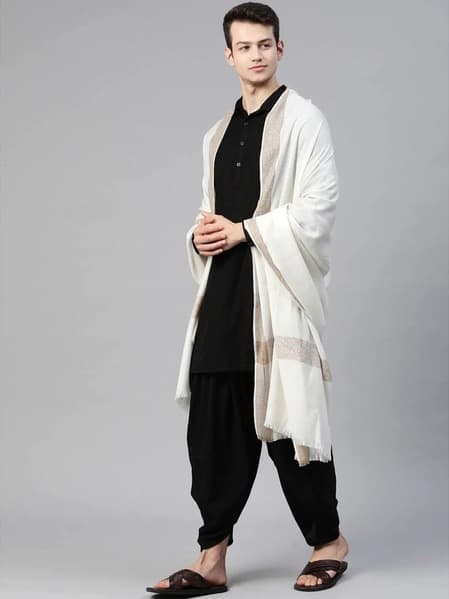
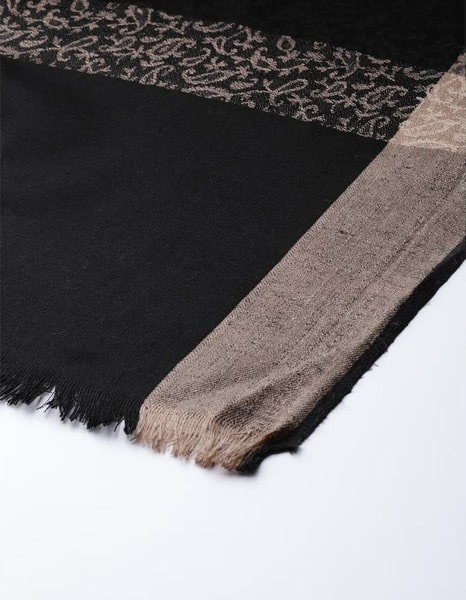
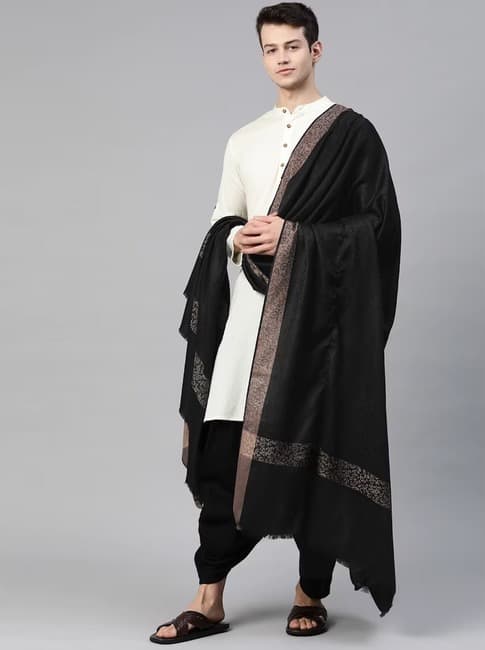
The History of Kani Shawls
The history of Kani shawls is as rich and intricate as the shawls themselves, with roots believed to date back to the 16th century in the Kanihama region. Once treasured by Mughal kings, Sikh maharajas, and British aristocrats, these luxurious shawls have long been a symbol of status and refinement.
Emperor Akbar, as recorded in the Ain-i-Akbari, was known to be an avid collector of Kani shawls. The earliest evidence of Kani shawls, found in samples and fragments from the late-seventeenth century, reveals a strong visual connection to the Iranian termeh tapestry. The sophisticated tapestry technique used in modern Kani weaving, however, came to prominence in the eighteenth and nineteenth centuries.
To wrap it up
Kani shawls are a treasured and exquisite textile tradition that has been carried on for centuries. The intricate and laborious process of weaving each shawl by hand is a testament to the skill and dedication of the artisans who create them. While the popularity of Kani shawls has had its ups and downs over the years, they remain a powerful symbol of Kashmiri culture and a true work of art. The future of this fascinating art is unknown, we surely hope it will find a way to survive and flourish!

